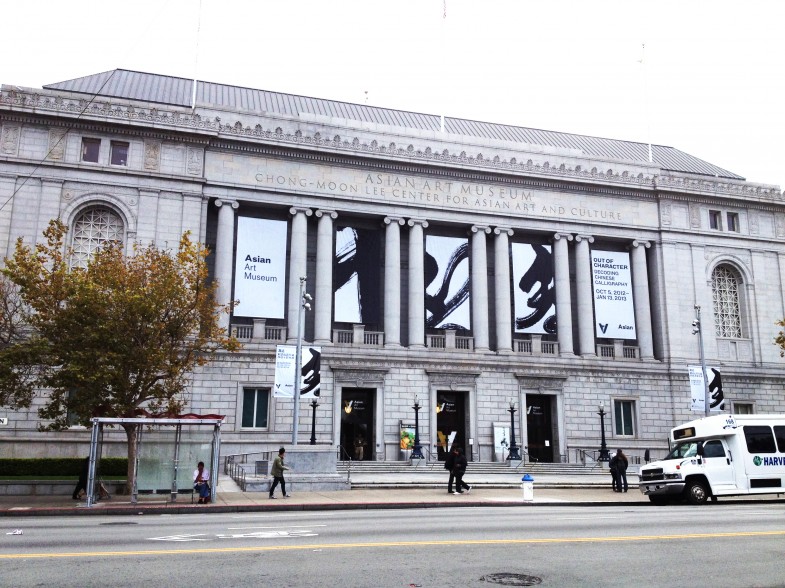
For three days from Friday October 19th to Sunday October 21th, I was one of the featured artists for the first series of AsiaLive events for the exhibition Out of Character: Decoding Chinese Calligraphy at Asian Art Museum in San Francisco. For this round, the concept was that two calligraphers from different traditional or cultural background will collaborate in the demonstration and co-create an artwork. I was invited to collaborate with Christian Cabuay, Philipino calligraphy (Baybayin) artist, for the live demonstrations, lectures and workshops. We spent hours for meetings, discussions and preparation from April this year, and learned about each other’s traditions and cultural struggles.
Here’s the photo documentation of Saturday & Sunday sessions (photo by Akko Terasawa).
[DAY2: Saturday Oct 20, 2012]
Baybayin artist Christian Cabuay (on the right) and I explaining the concept of the event.
Step 1 – mixing inks
Christian writing “Simula (origin)” in Baybayin
He is using a flat brush. I have never used this kind for my calligraphy works.
My turn – writing “源 (Origin)” in Japanese, using a big brush made of horse hair
Last stroke. 最後の一画
It was an interactive demonstration – audiences can ask us questions as we write each sections of the piece
Christian starts writing the first section of his Philipino traditional proverb:
“Those who don’t love their language are worse than animal or smelly fish”
Then I write the first section of one of my favorite quote by
鴨長明 (Kamo no Chomei, 1153-1216) from his famous essay 方丈記 (Hojo-ki):
「ゆく河の流れは絶えずして、しかももとの水にあらず。」
“Though the river’s current never fails, the water passing, moment by moment, is never the same.”
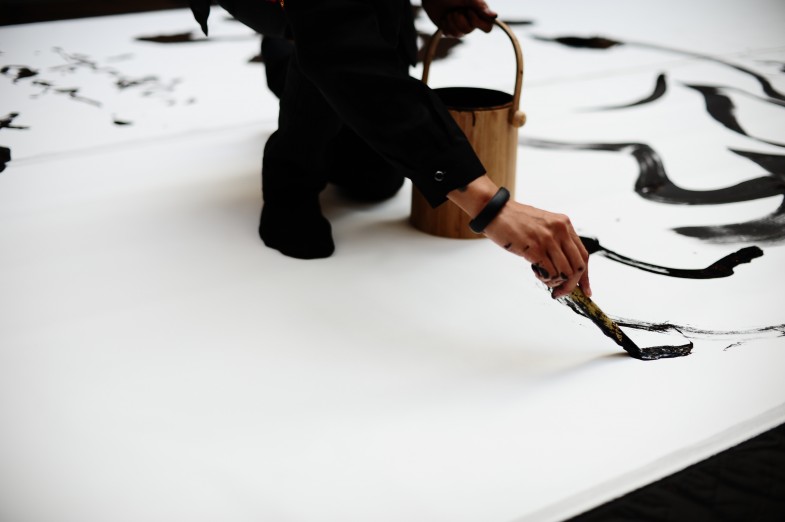
Then Christian writes second half of his proverb
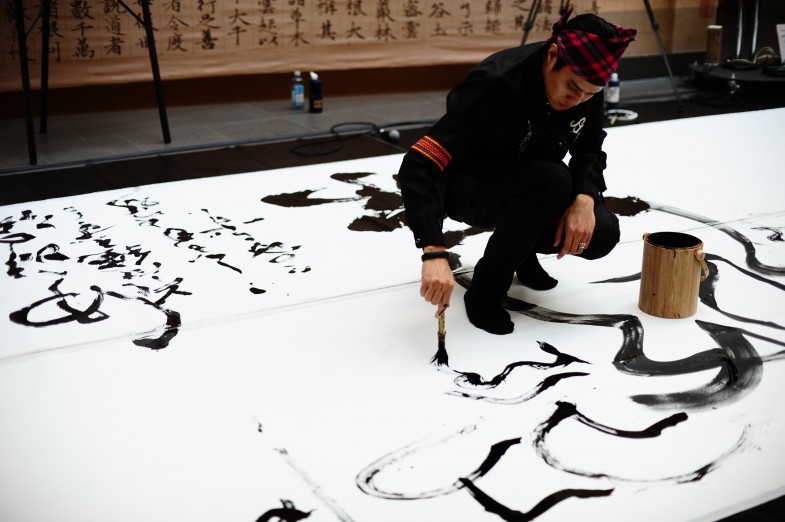
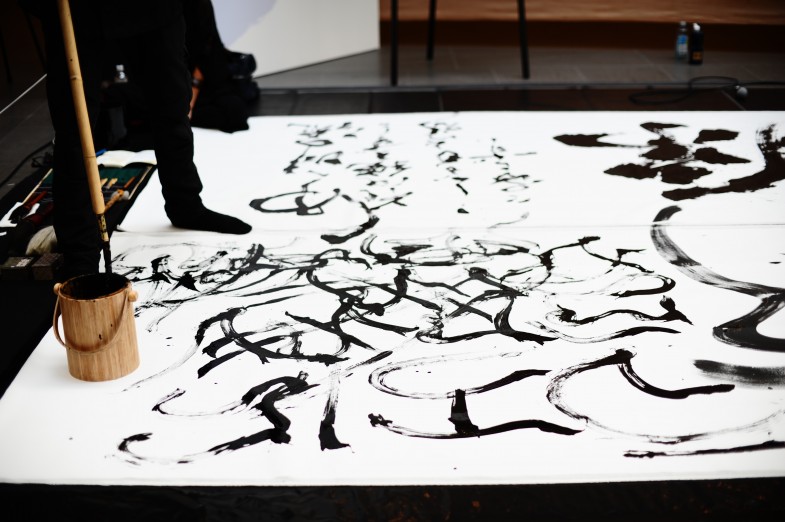
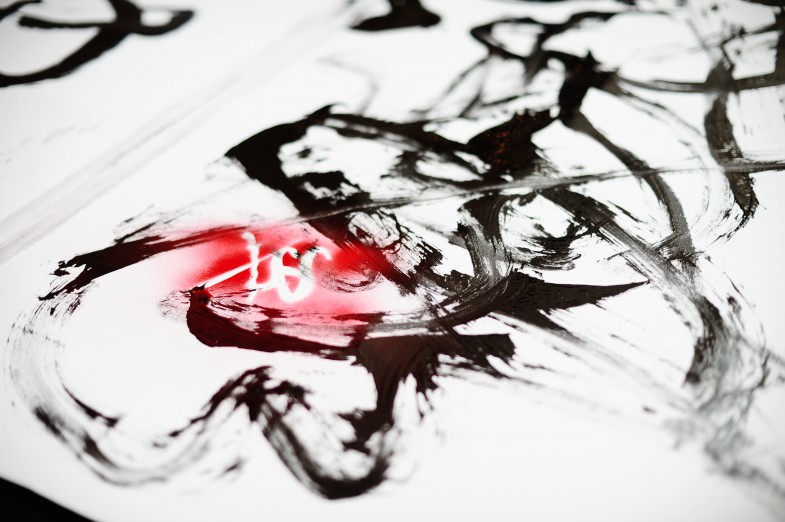
Christian’s spraypaint stencil signature
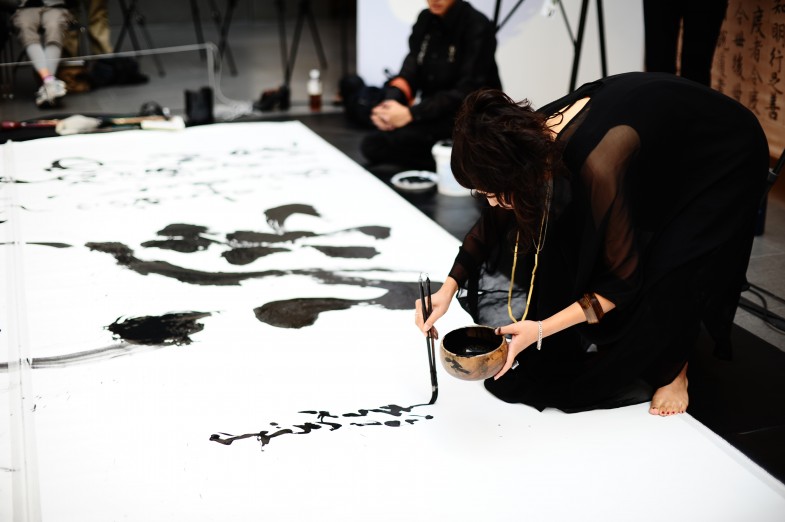
At last, I wrote the second half of the quote:
「よどみに浮かぶうたかたは、かつ消えかつ結びて、久しく
“Where the current pools, bubbles form on the surface,
bursting and disappearing as others rise to replace them, none lasting long.”
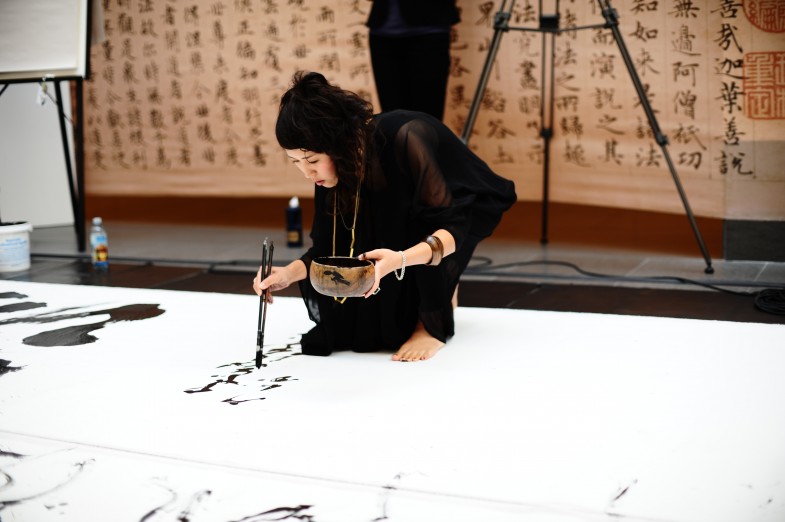
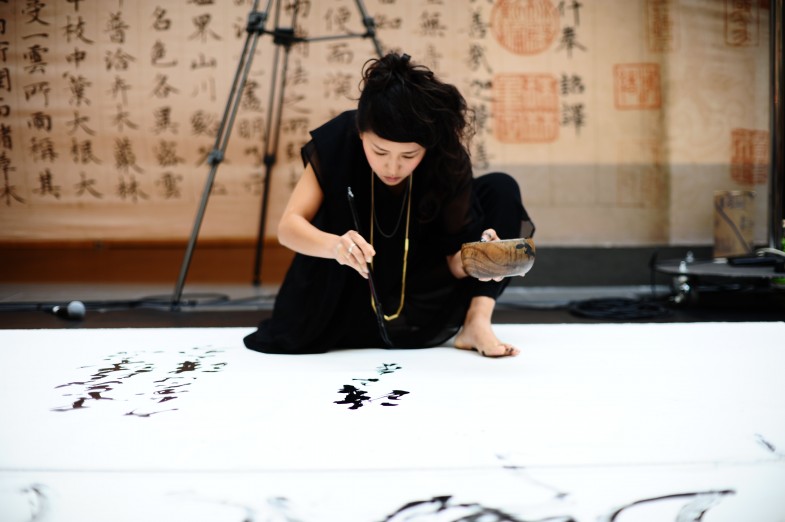
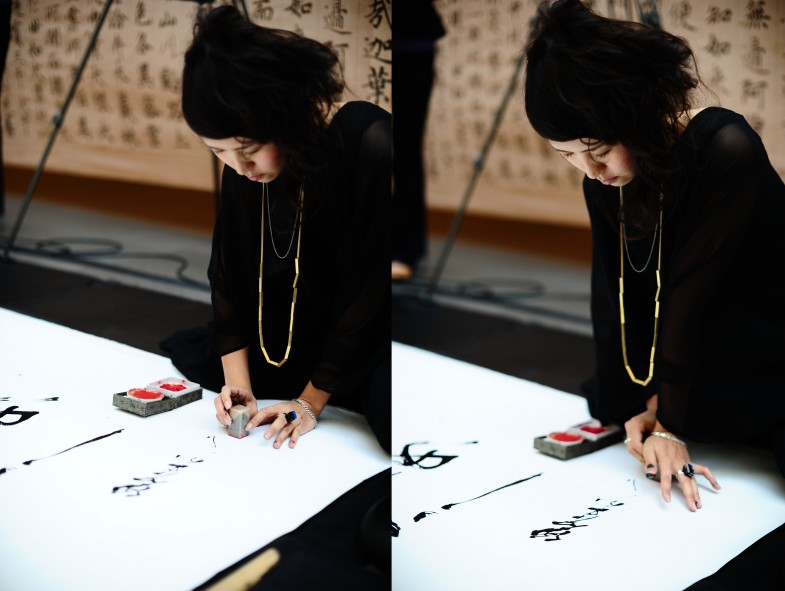
Finished with the chop (印 inn)
– For the workshop table, I made original instruction sheets of five characters: 力 (power), 和 (peace), 幸 (happiness), 美 (beauty) and 愛 (love). They were available to take home at the workshop table, and visitors were encouraged to get their hands dirty and try on their own. These will be available for download on the museum’s website very soon. It was lovely to see everyone holding brushes!
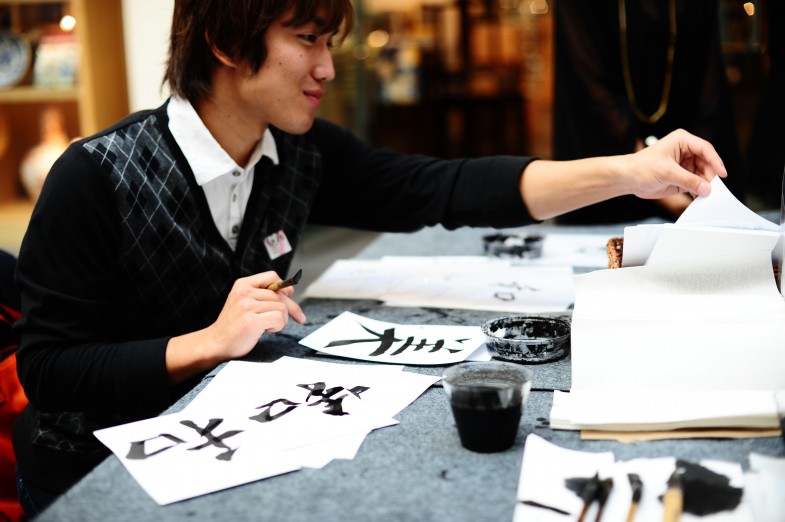
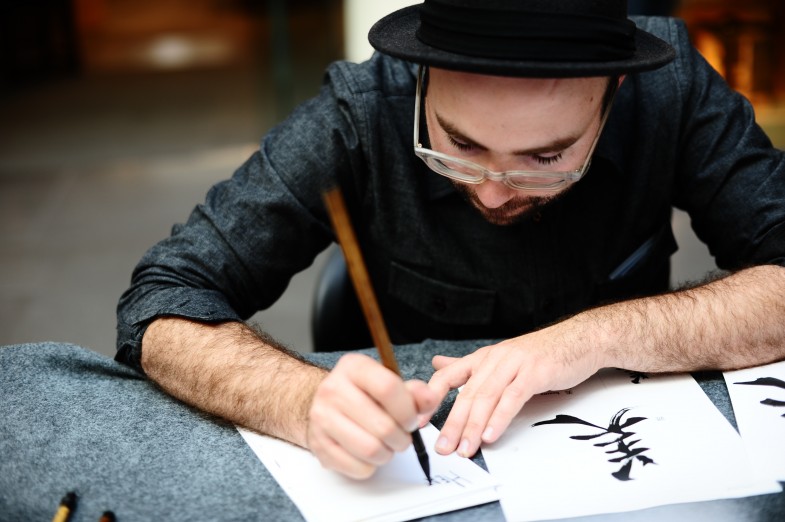
Some of them were really into practicing! 🙂
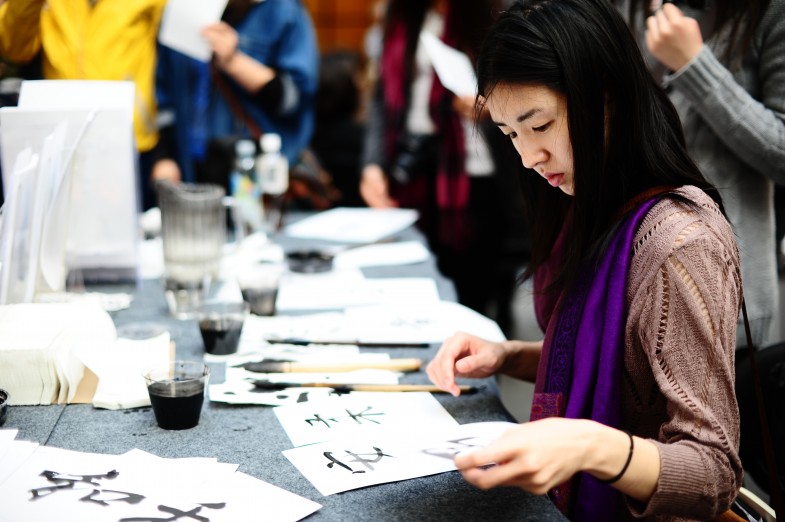
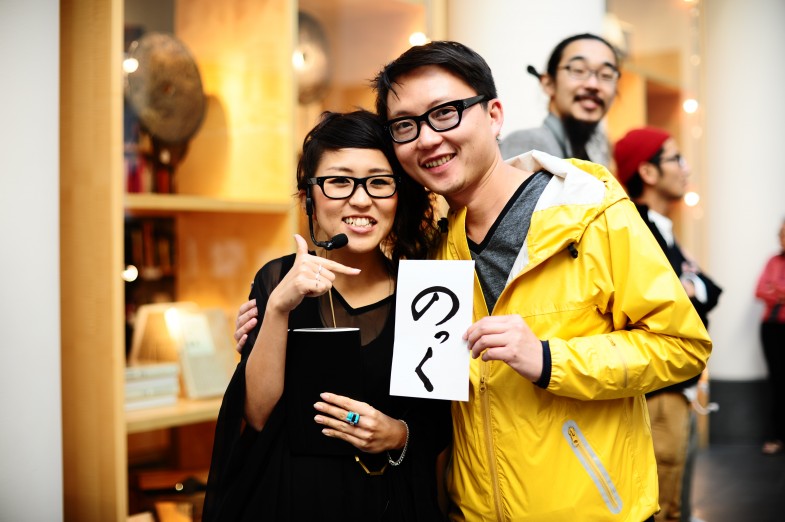
Lots of questions and active visitors & friends – it was a great day 2!
[DAY 3: Sunday Oct 21, 2012]
Last day. Seats were getting filled…
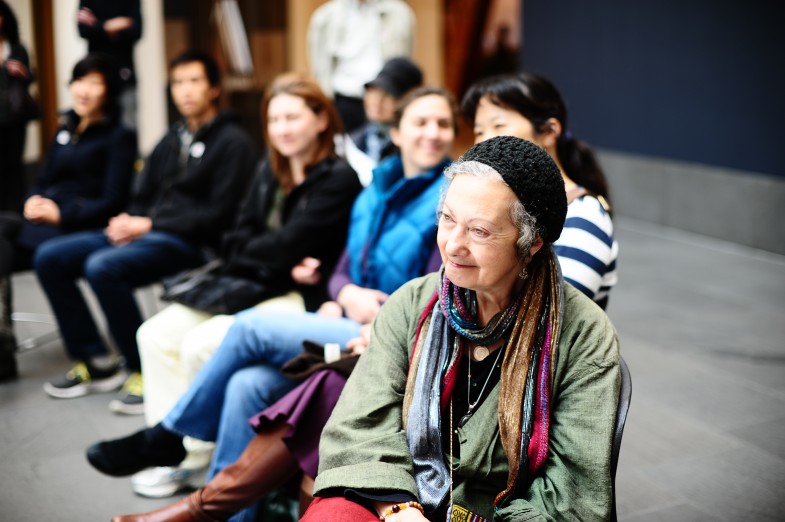
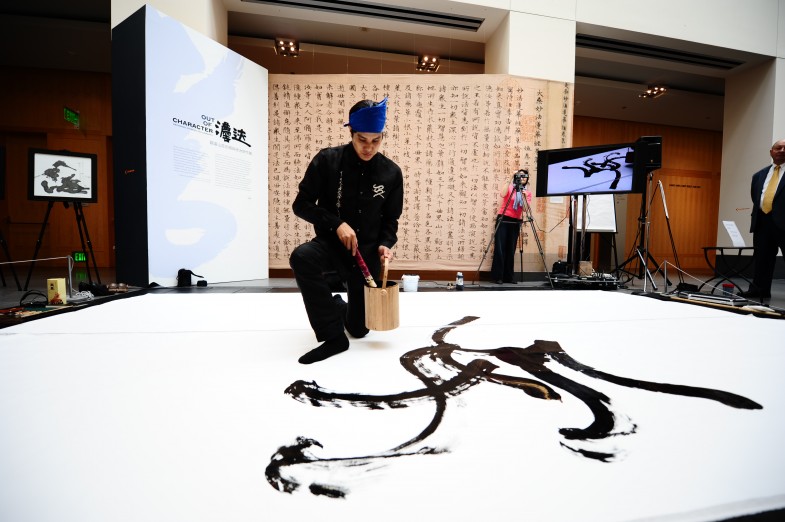
Live camera feed on the monitor helps audiences to see the actual writing in the right orientation.
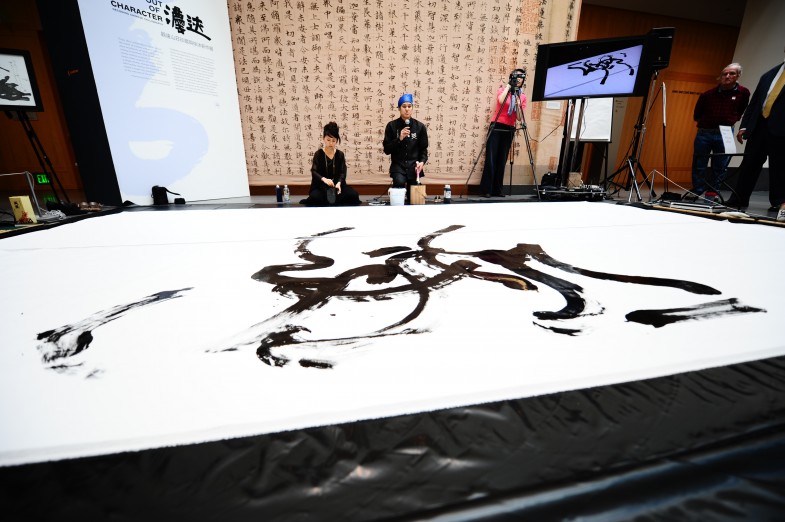
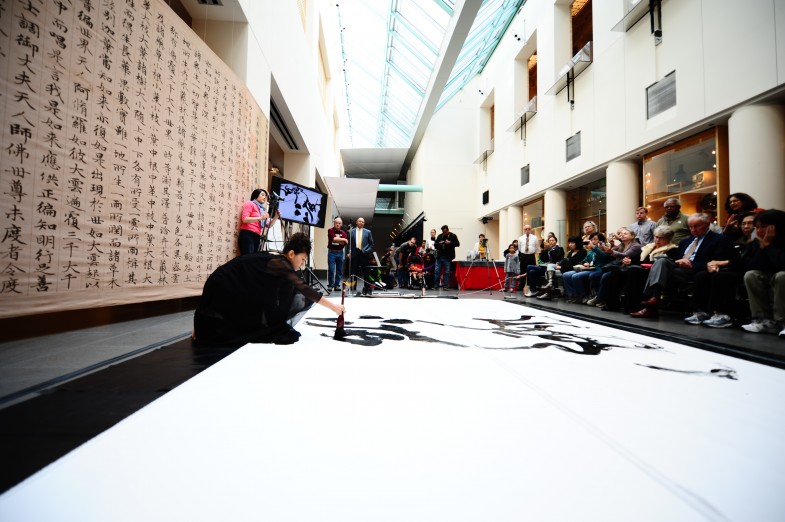
Feels so good to write on a large canvas! Writing「源」
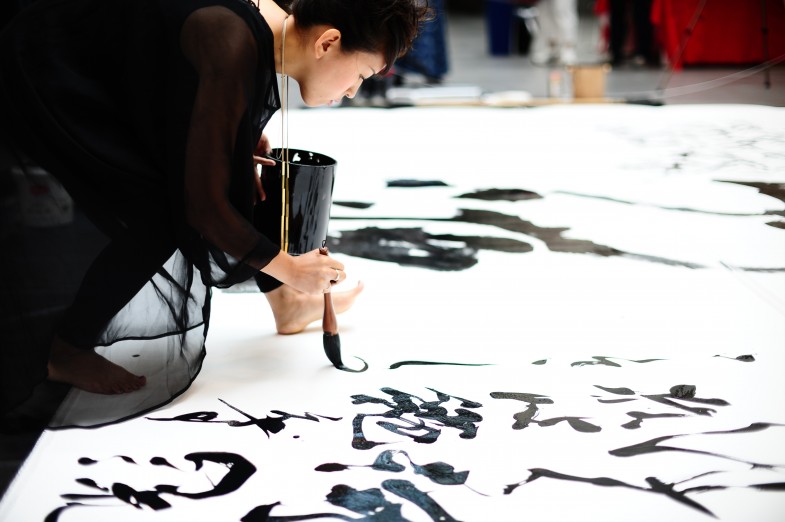
Breathing rhythmically
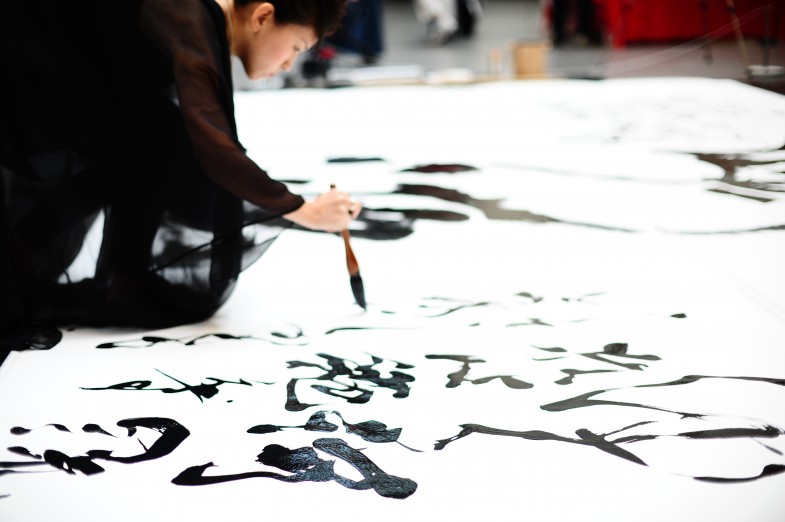
Although I use the same brush and ink, words and strokes look different everyday.
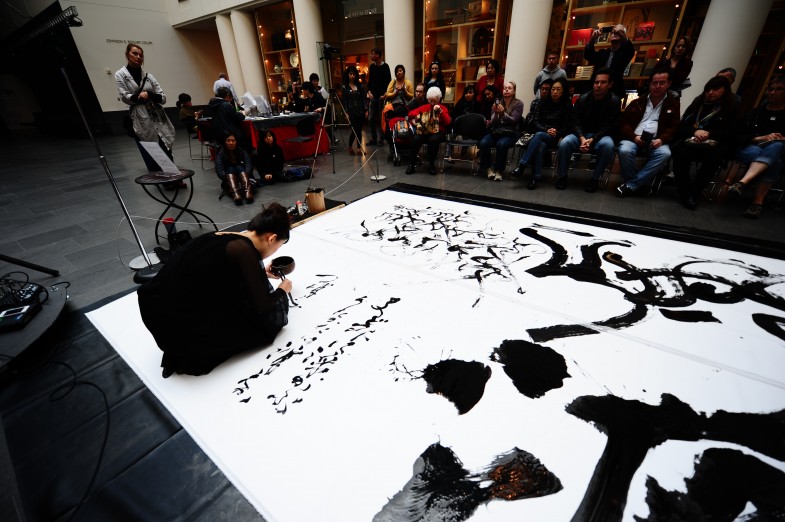
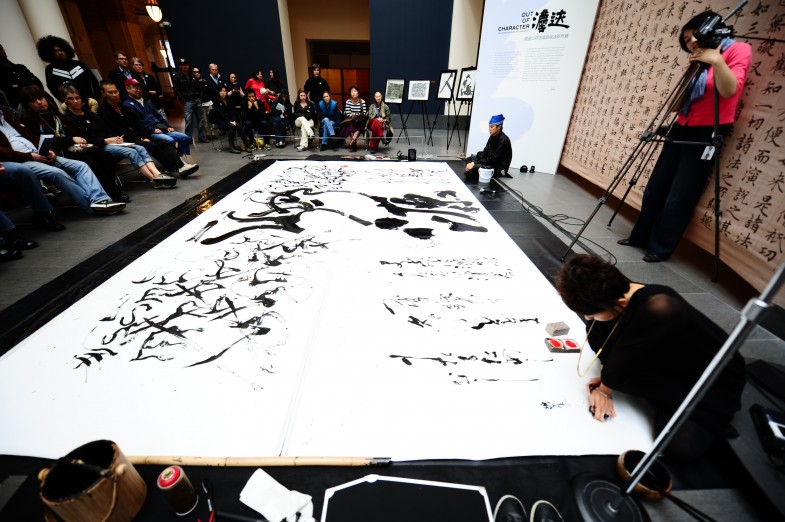
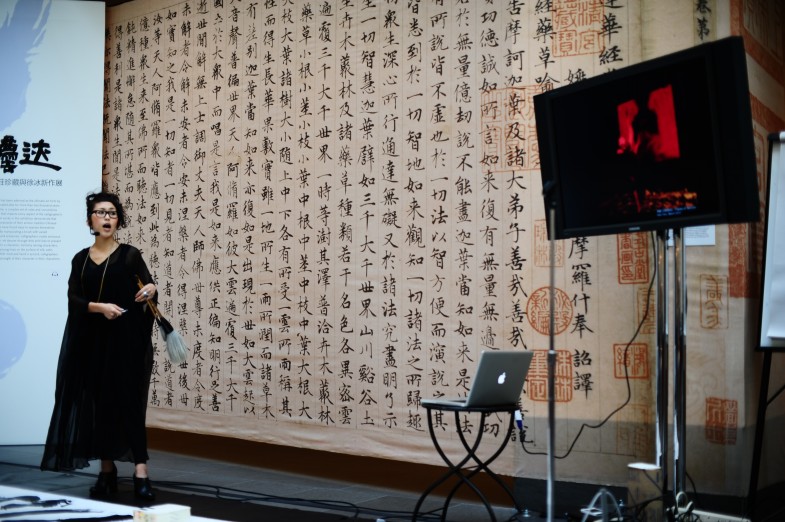
From 2pm, Christian and I both gave a 45 minutes keynote lecture, introducing a brief history of writing systems, nation’s spirituality, struggle and our art works.
I talked about the invention of Japanese writing system, the art of Japanese calligraphy, Japanese spirituality, the transition from the traditional to contemporary, and the concepts of my live calligraphy performances – my challenges as a calligrapher and a contemporary artist.
Thank you for all who stayed for my presentation, I was happy to share my journey with you all!
– And I closed the presentation with explaining the idea behind the theme of this event, “New Traditions”:
Embracing traditions, rituals and our roots, we are pushing the boundaries and creating something anew by integrating international cultural ideas, styles and forms into our traditional foundations in the contemporary culture. “Traditions” in plural since we have different cultural background and writing systems – Japanese and Baybayin. A tradition does not only come from thousands of years ago, but we’re also the innovator of new traditional art practice – what we are creating will be part of the tradition for the next generation.
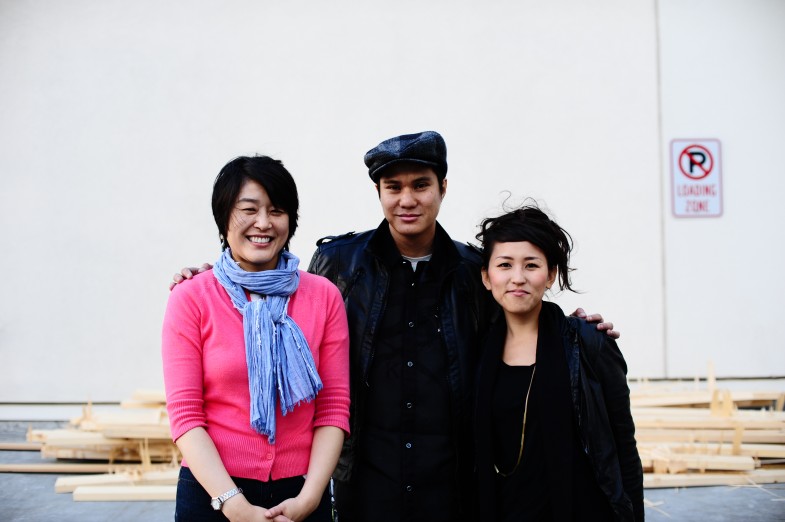
Saly Lee, Senior Educator for Arts and Gallery Programs at AAM (on the left), Christian Cabuay (middle), and me
Thank you so much, Saly and Christian, it was great working with you two.
Always amazing photos by Akko Terasawa.

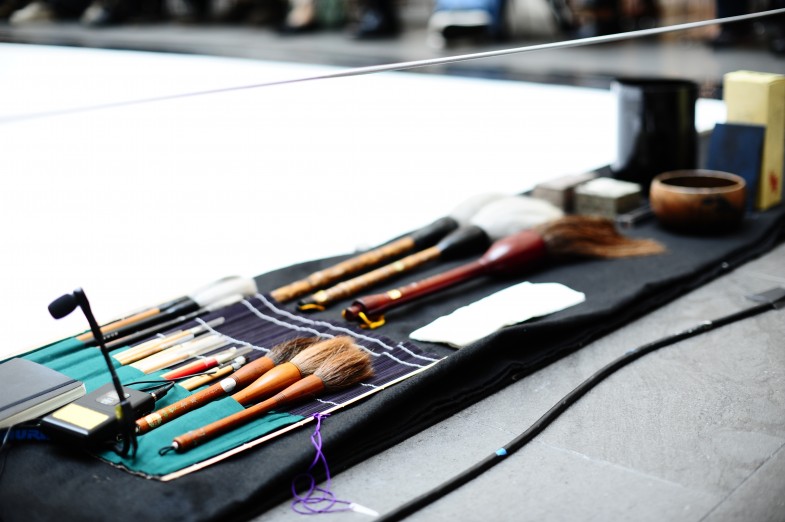
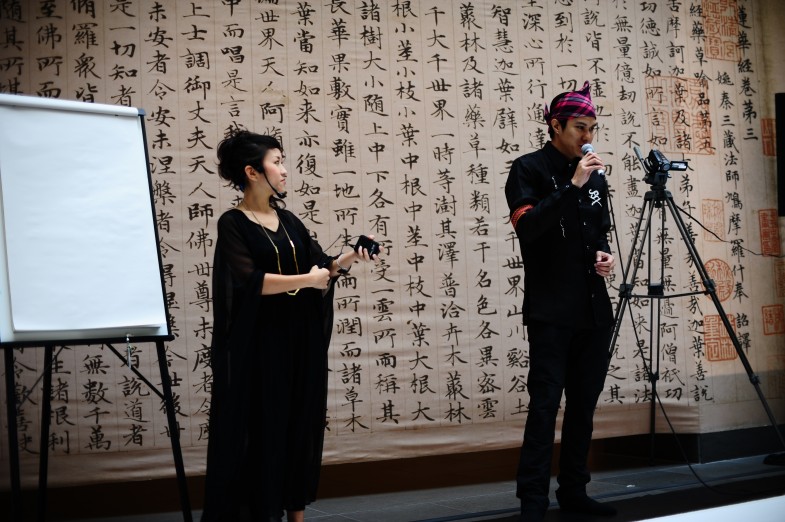
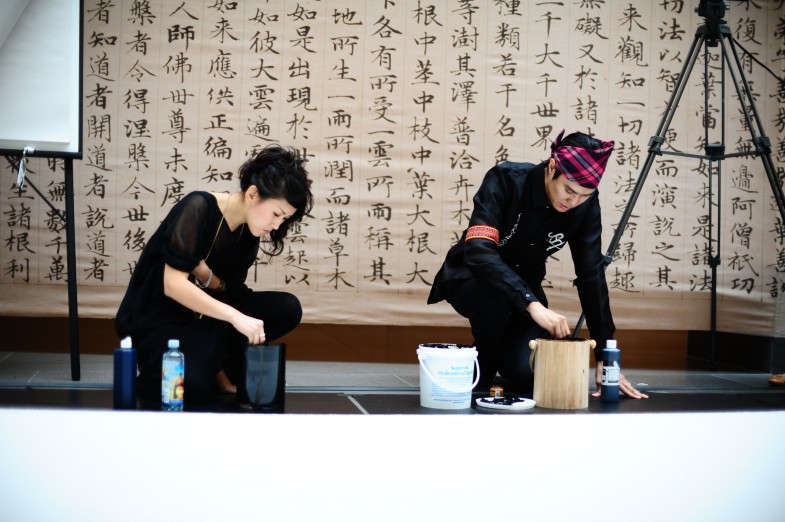
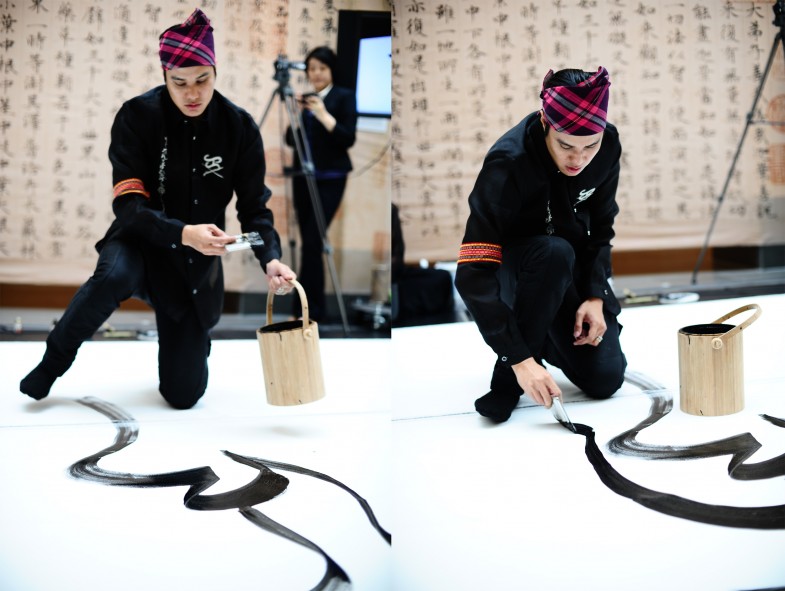
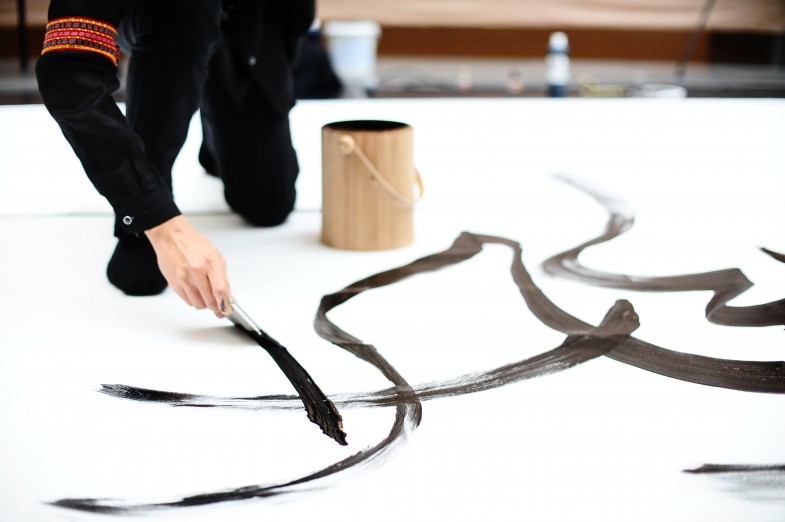
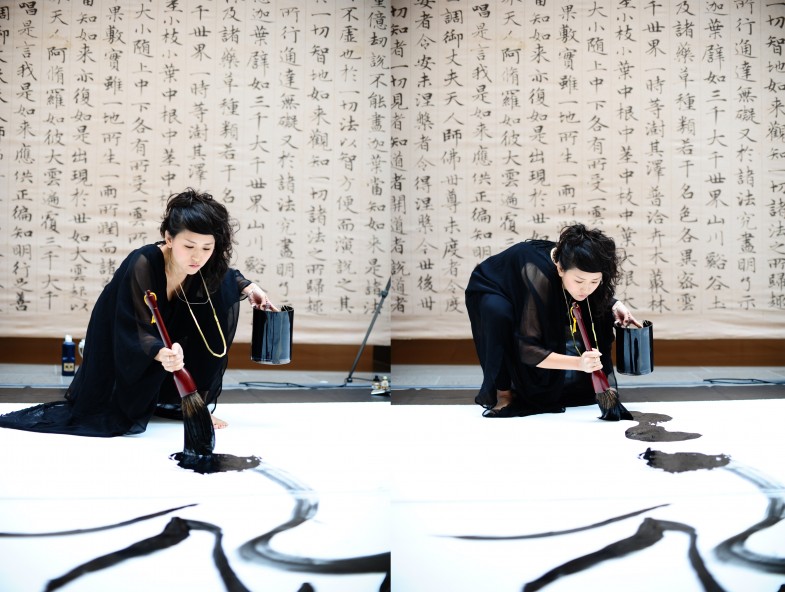
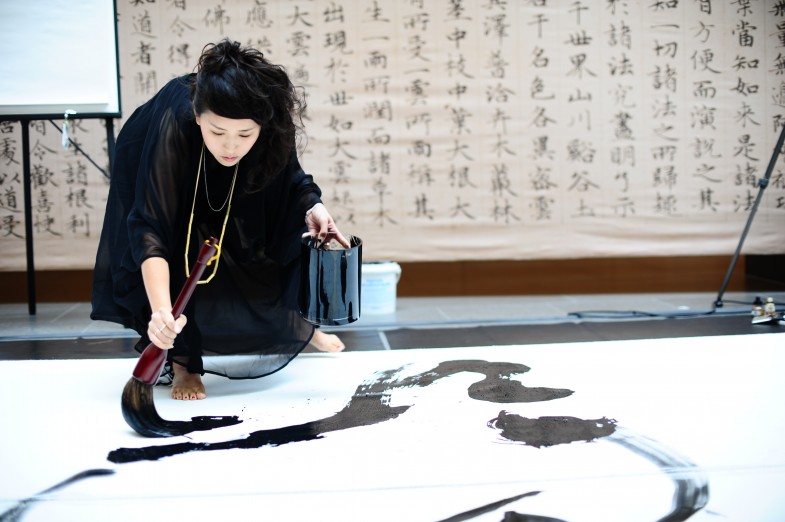
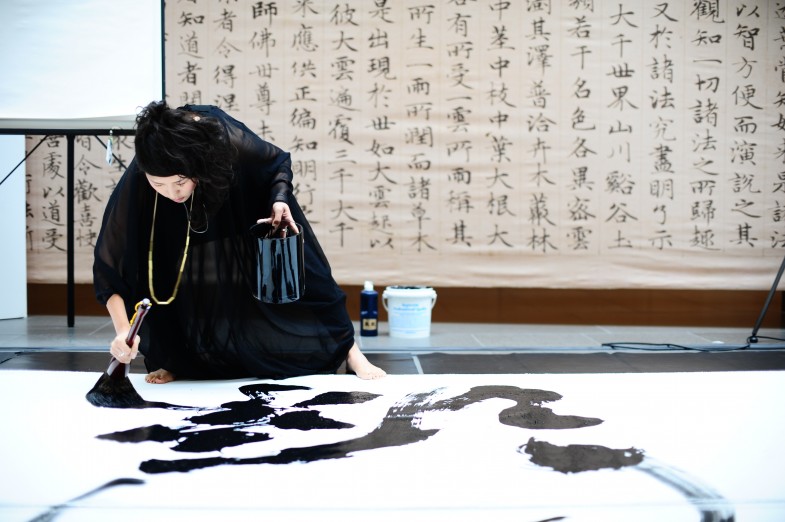
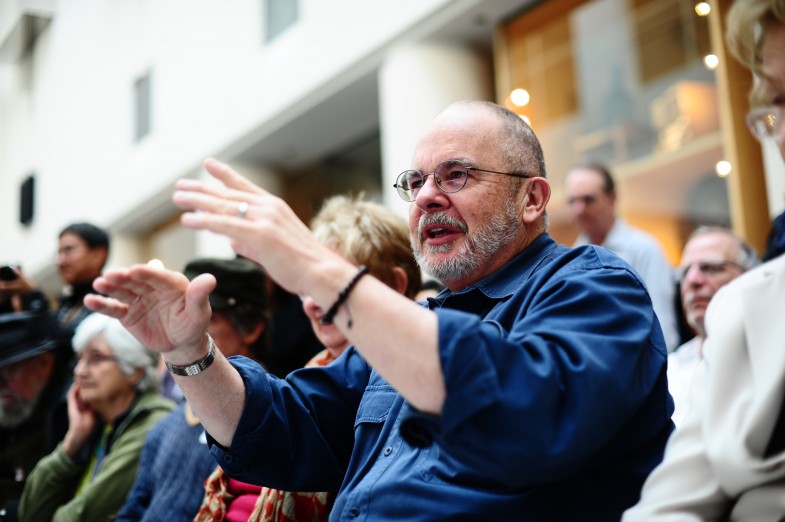
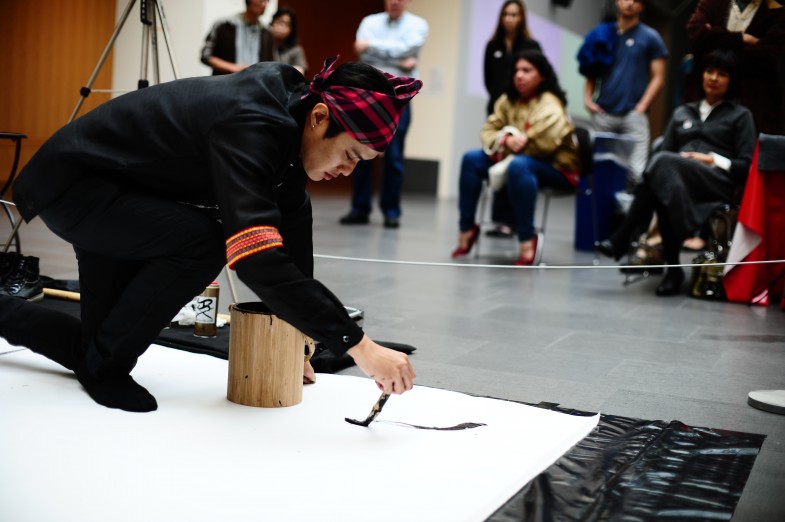
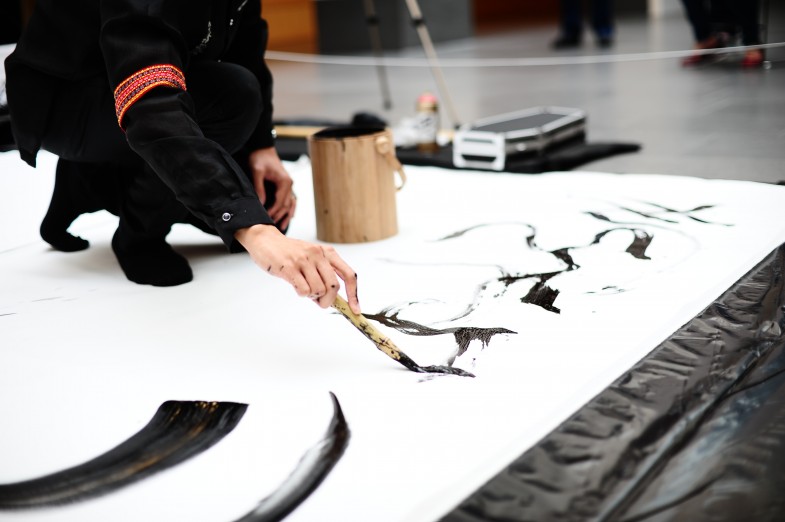

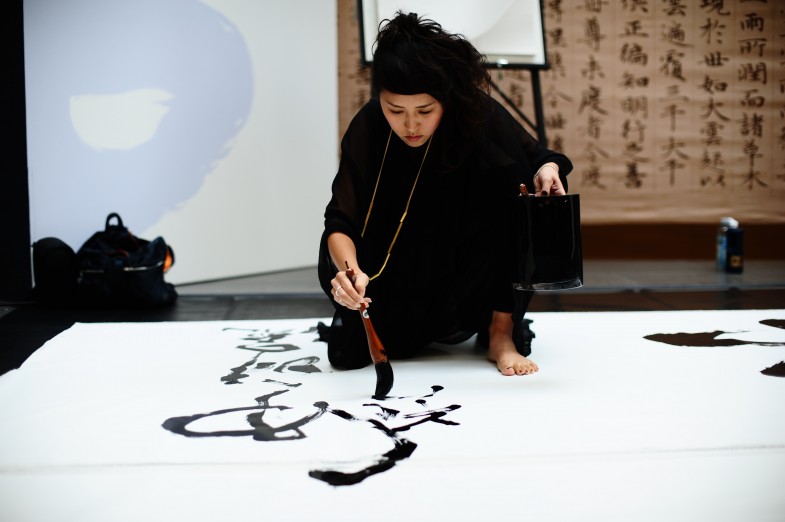
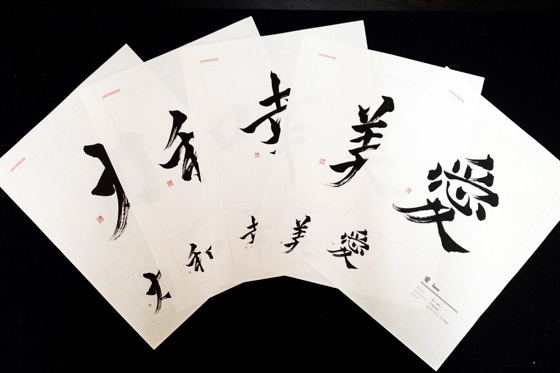
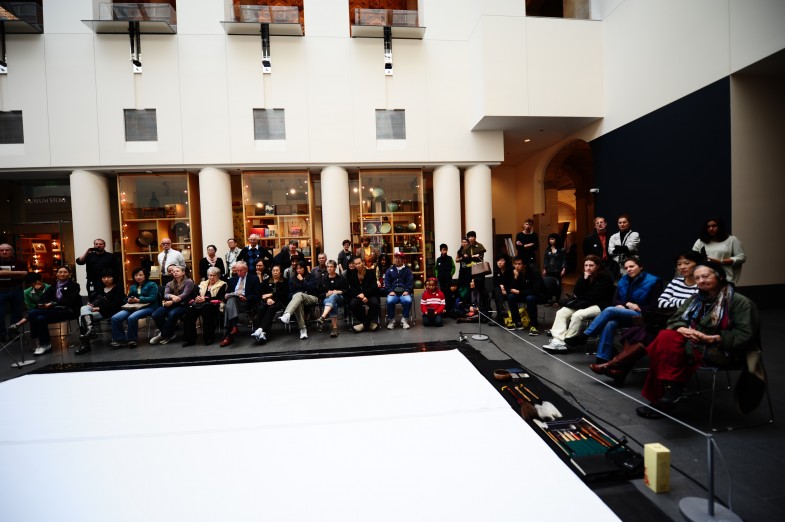
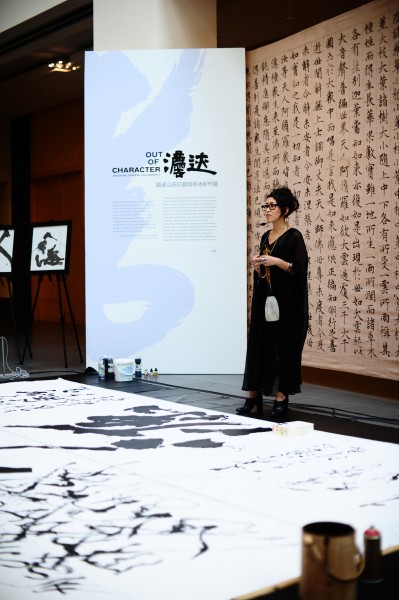
Leave a Comment